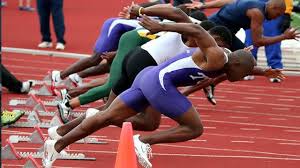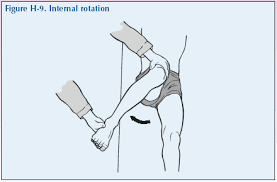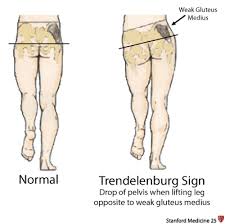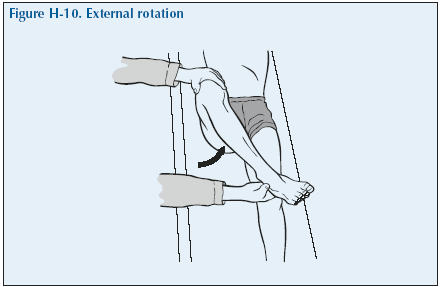So often our glutes are blamed for lower limb injuries. Tight hamstrings? Your glutes are probably weak. Knee pain? Ah your glutes aren’t firing. Flat feet? Your glutes could be causing that. How can one muscle be responsible for so many injuries? We all assume everyone is aware of what our glutes do but, in truth, very few know about the subtle differences in the different gluteal muscles.
So, what do our glutes actually do?
Our glutes are made up of 3 muscles; gluteus maximus, gluteus medius and gluteus minimus. Yes, they all sound like characters from Gladiator so to avoid this confusion we’ve shortened it simply to “glutes”. Beneath these again are more muscles often grouped under the term glutes; specifically, our piriformis, obturator internus and gemmilli (superior and inferior). Did you realise there were that many muscles knocking about underneath your glute max? When each of these muscles has a different function is grouping them together often wisest?
So, what do our glutes actually do?
Our glutes are made up of 3 muscles; gluteus maximus, gluteus medius and gluteus minimus. Yes, they all sound like characters from Gladiator so to avoid this confusion we’ve shortened it simply to “glutes”. Beneath these again are more muscles often grouped under the term glutes; specifically, our piriformis, obturator internus and gemmilli (superior and inferior). Did you realise there were that many muscles knocking about underneath your glute max? When each of these muscles has a different function is grouping them together often wisest?
Gluteus Maximus
Our glute max. is the biggest of our gluteal muscles (hint is in the name!) and pretty much covers our entire hip bone at the back. It covers all the other gluteal muscles and happens to be the heaviest, largest and most coarsely fibered muscle in our body.
Action: Its action is hip extension, especially from a flexed position (think about the start position for a sprint). It assists in some external rotation while also steadying our thigh and assisting from a sitting to standing position. A lot of its fibres insert into the iliotibial tract (more commonly known as the IT Band). This means that your glute max assists in keeping a straight knee more stable, especially in running.
Training: Because your glute max is predominantly a hip extensor, you guessed it; you need to train hip extension. Shoulder bridges and hip thrusts are a good place to start
Relevance to Running: Think of glute max as the power engine. This is the muscle that starts you off on that sprint. In fact, research has shown there’s been a link between sprint speed and peak hip thrust strength. So, if you want to get faster, get your barbell out and start hip thrusting!
Our glute max. is the biggest of our gluteal muscles (hint is in the name!) and pretty much covers our entire hip bone at the back. It covers all the other gluteal muscles and happens to be the heaviest, largest and most coarsely fibered muscle in our body.
Action: Its action is hip extension, especially from a flexed position (think about the start position for a sprint). It assists in some external rotation while also steadying our thigh and assisting from a sitting to standing position. A lot of its fibres insert into the iliotibial tract (more commonly known as the IT Band). This means that your glute max assists in keeping a straight knee more stable, especially in running.
Training: Because your glute max is predominantly a hip extensor, you guessed it; you need to train hip extension. Shoulder bridges and hip thrusts are a good place to start
Relevance to Running: Think of glute max as the power engine. This is the muscle that starts you off on that sprint. In fact, research has shown there’s been a link between sprint speed and peak hip thrust strength. So, if you want to get faster, get your barbell out and start hip thrusting!
| Gluteus Medius and Gluteus Minimus Poor glute med and glute min…the forgotten sisters of glute max. These 2 are underneath our glute max and are considerably smaller. Action: They abduct and internally rotate the thigh. They also keep your pelvis level while standing on one leg Training: I’ve yet to meet someone (who is not a qualified health professional) train internal rotation of their hip. Most people don’t even know how to internally rotate their hip! A reverse clam is a good place to start but you also need to train this muscle functionally. While standing on one leg does your pelvis remain steady? What about when you start moving that leg? This is something we concentrate on so much in our Pilates for Running & Sports class and even in our Mat Pilates classes. Relevance to Running: If you don’t internally rotate your hip as an exercise, you’re obviously going to lose strength in your glute med and min right? Then how can you expect to stand on one leg and maintain a stable pelvis? Pelvis is KING in running! Maintaining a good pelvic-neutral position ensures all muscles that attach to it act at their appropriate length and most effective. Considering running is effectively standing on one leg and then another repeatedly, that requires a fair bit of pelvic stability. |
| Piriformis / Obturator Internus / Superior & Inferior Gemelli We’re grouping these muscles together because they all have the same action. Piriformis is most likely the muscle you’ve heard of, piriformis syndrome being a common occurrence in runners. Action: These muscles externally rotate your thigh while also abducting a flexed thigh and keeping your femoral head secure in its acetabulum (hip socket). Training: The clam, a banded squat, side stepping squat (banded again) and a single leg squat will effectively help strengthen these up in an isolated manner and functionally. Another popular movement in our pilates classes at PhysioElite. Relevance to Running: We’ve talked about how running is basically hopping from one leg to another. When we land on that front leg as we run, we want a slight bend in our knee to minimise knee injuries (a whole other blog!). So, if we think about it, we’re really single leg squatting repeatedly as we run. If you can’t do a single leg squat with good technique, how can you expect to run with good technique? |
Here’s hoping this hasn’t confused you further about which of your glutes needs the most work! Happy pre-hab!
References:
References:
- Dello Iacano, A. (2017) Loaded hip thrust-based PAP protocol effects on acceleration and sprint performance of handball players. Journal of Sports Sciences, Ahead of print.
- http://www.opt.net.au/trendelenburg-gait/ (Pictures accessed 19/1/19)
- http://bjdonline.org/the-hip/ (Pictures accessed 19/1/19)
- https://rbtgyms.com/blog/4-simple-glute-activation-exercises (Pictures accessed 19/1/19)
- Moore K. L., Dalley A. F., Agur A. M. R. (2010): Clinically Oriented Anatomy (6th Ed.) Lippincott Williams & Wilkins: Baltimore





 RSS Feed
RSS Feed
